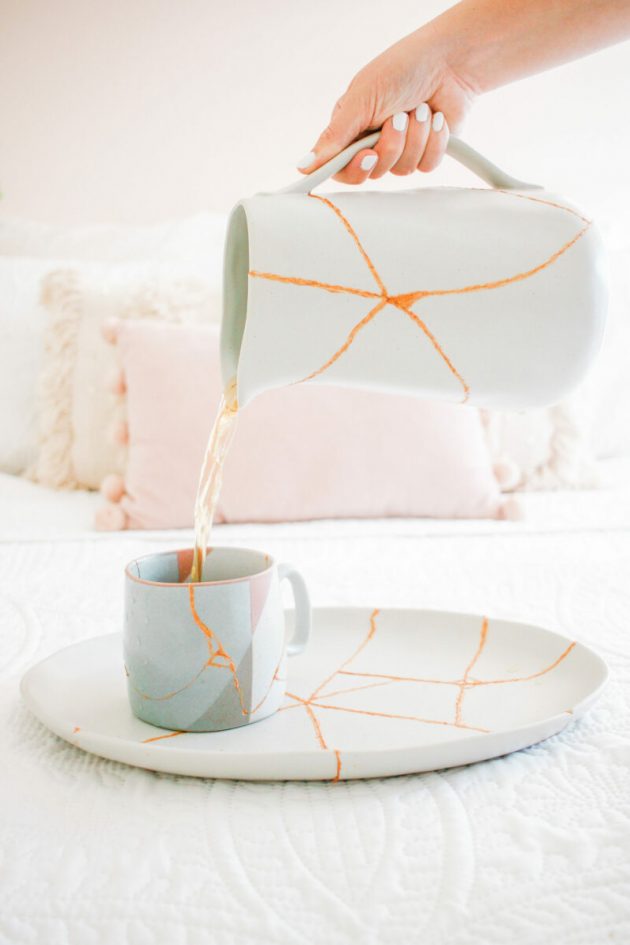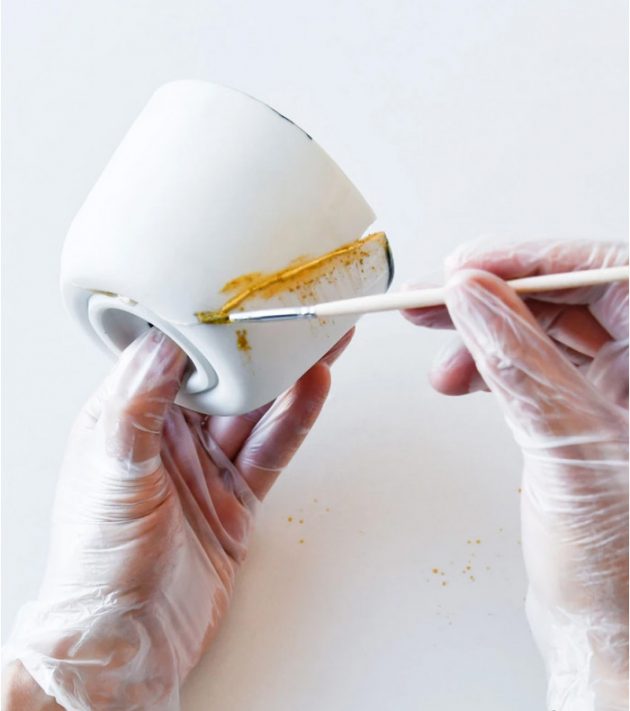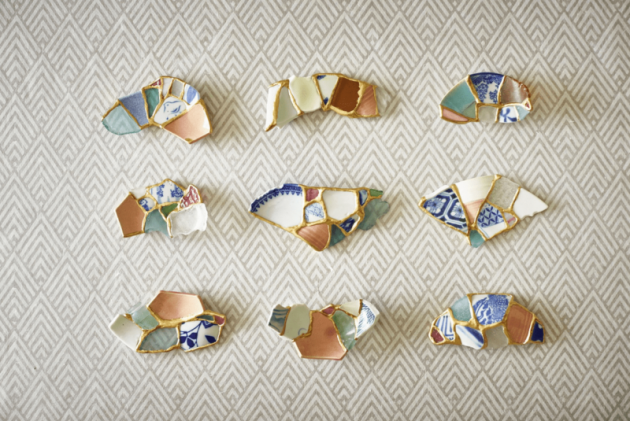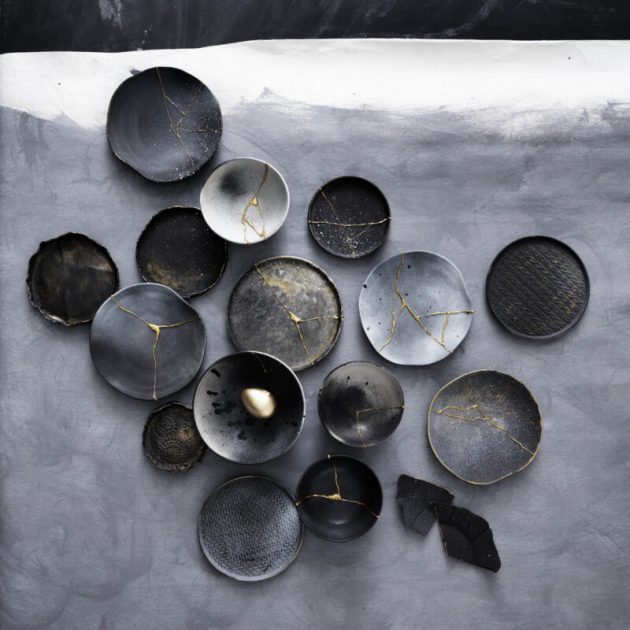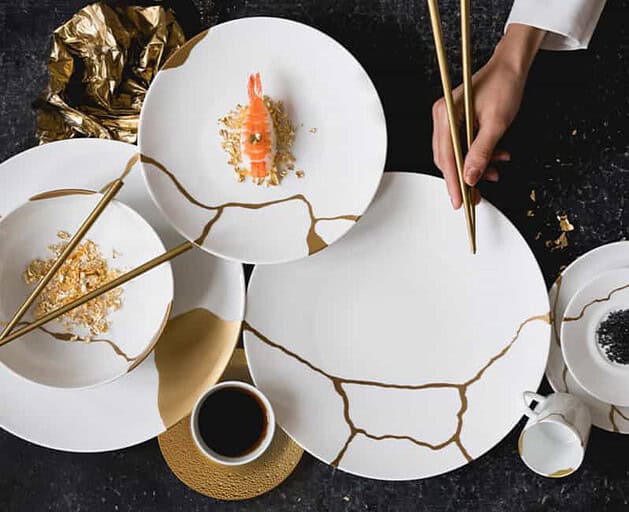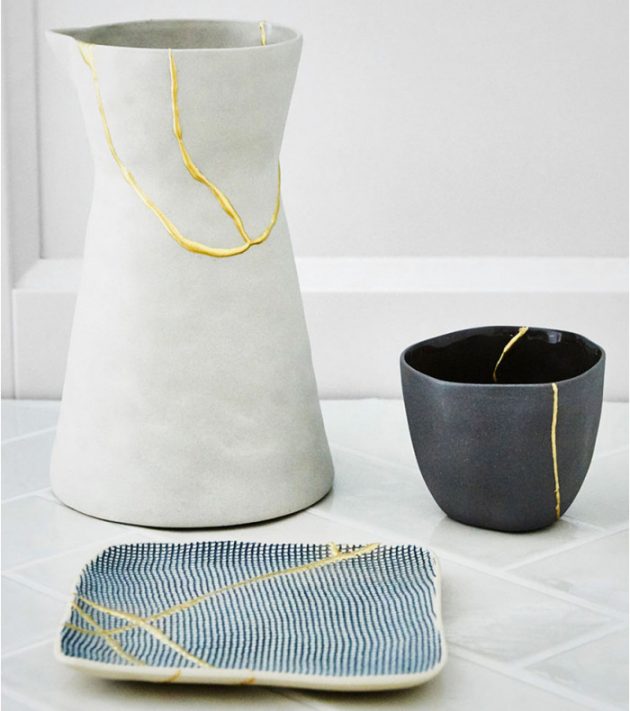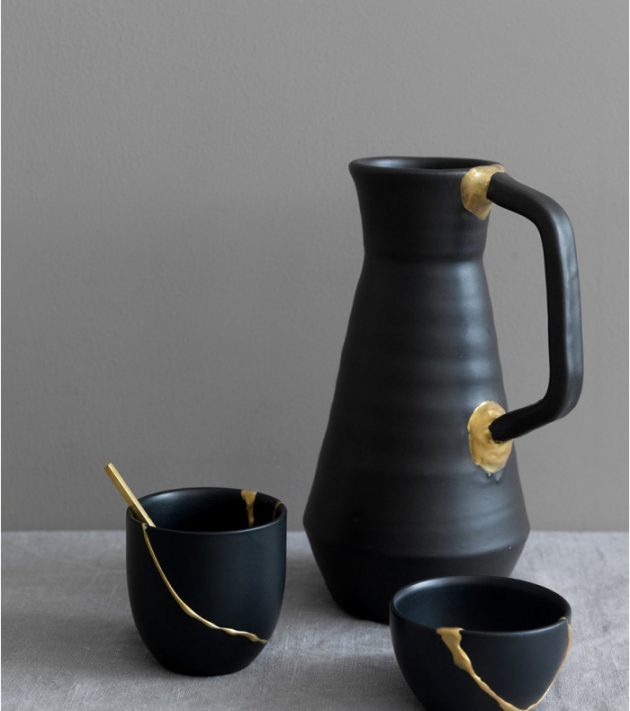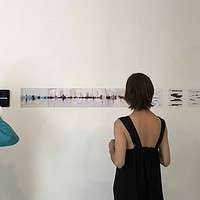Thanks to Kintsugi, this 15th-century Japanese art, your chipped or broken porcelain will not end up in the trash! On the contrary, you will give it a second life.
Indeed, this ancient technique is to repair an object by sticking its broken parts with gold powder (or silver). Proof of this is that the word “Kintsugi” comes from the Japanese Kin (gold) and Tsugi (joint), literally meaning “joint with gold”. A meaningful approach that consists of exalting the beauty of broken pieces! Instead of masking the fault lines, the Kintsugi, on the contrary, allows them to be emphasized.
Much more than a repair technique, it is an approach that allows highlighting the repaired part, its history, its age. But it is also a restorative technique not only for ceramics but also for souls…
A saving art
The art of Kintsugi, which says broken object, says a sign of renewal. Instead of hiding your flaws, you highlight them. The idea is to take into account his past, the accidents he may have known.
The repaired object thus symbolizes the start of a new cycle. An approach that is fully in line with this desire not to throw anything away, but also in the philosophy and tendency of Wabi-sabi which advocates the acceptance and contemplation of what is imperfect, atypical! But in addition to being a repair technique, an artistic practice, Kintsugi makes sense and is nourished by a philosophy that goes far beyond. Indeed, this art is used as a symbol and metaphor of resilience in psychology.
Repaired then honored, the broken object is reborn while assuming its past. It becomes more resistant, more beautiful, and more precious. A markdown that helps to support the healing of physical and/or emotional wounds, to take a step back, as an invitation to novelty.
A repair technique in several stages
Before embarking on the repair of your objects, you must have in mind the different stages of Kintsugi. It’s not about just gluing two pieces together. On the contrary, it is a long process – which can take weeks, even months – and precise. First, the shards of the broken object are gathered, then cleaned. Then, these are glued using a traditional natural lacquer. Once glued, the object is left to dry before being sanded. Essential preparation work before highlighting the cracks with layers of lacquer sprinkled with gold. It is also possible to use any other powdered metal like silver, bronze, brass, or copper ink.
Finally, it’s time for polishing to reveal all the shine of the object! Note that there are kits in Kintsugi to re-glue your broken porcelain using a mixture of epoxy resin and gold or silver powder. Whether you opt for the “classic” or “turnkey” technique, Kintsugi is a highly sought-after technique. It even seems that some voluntarily break their dishes or precious vase to transform them, upgrade them…
1.
2.
3.
4.
5.

